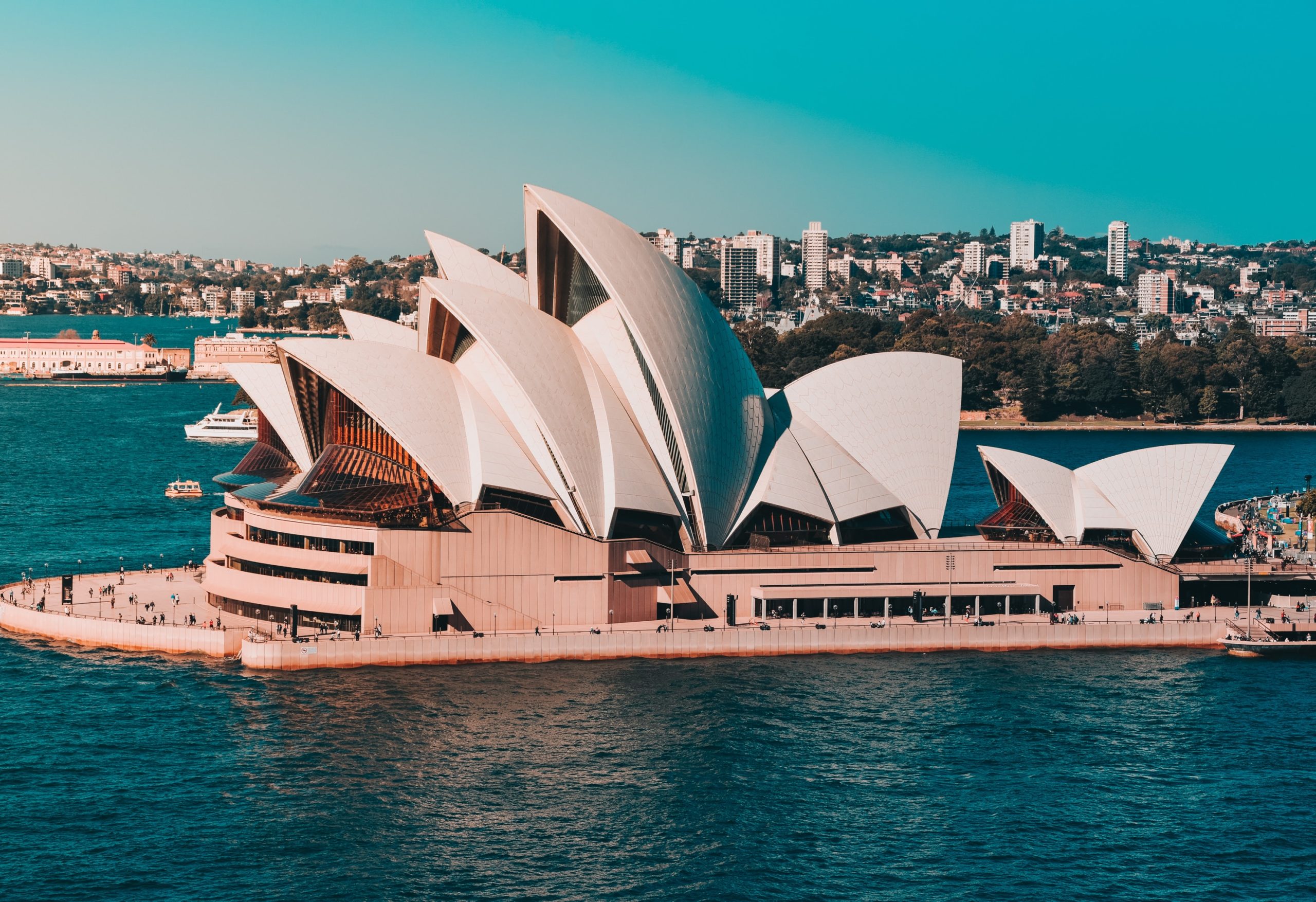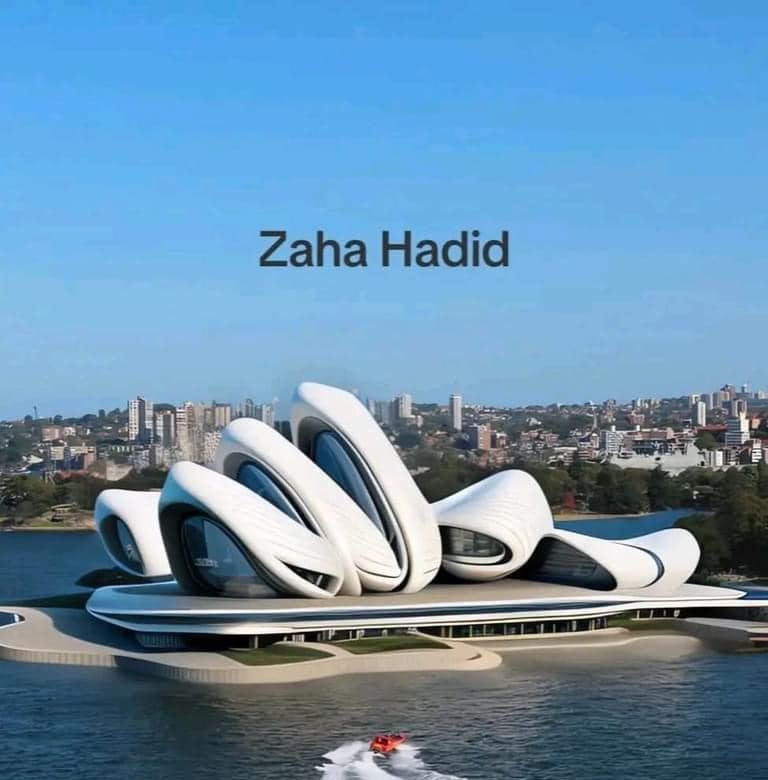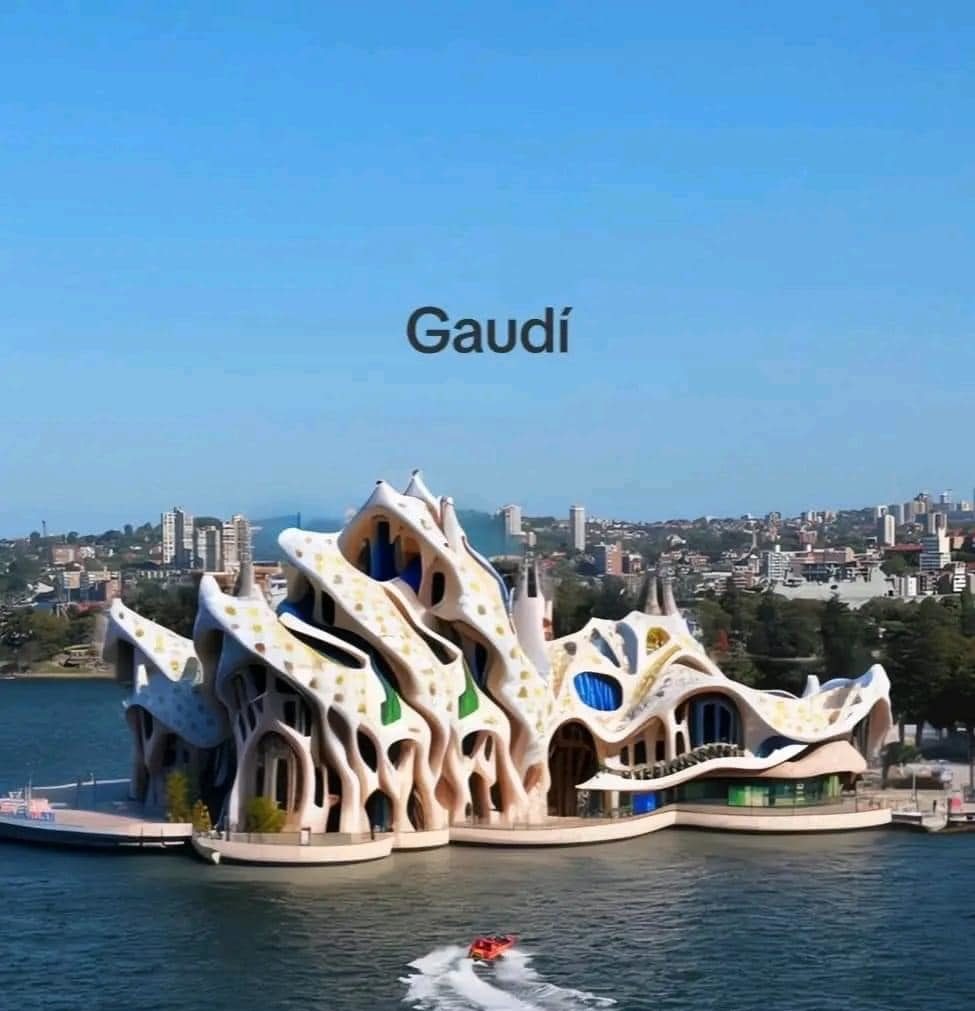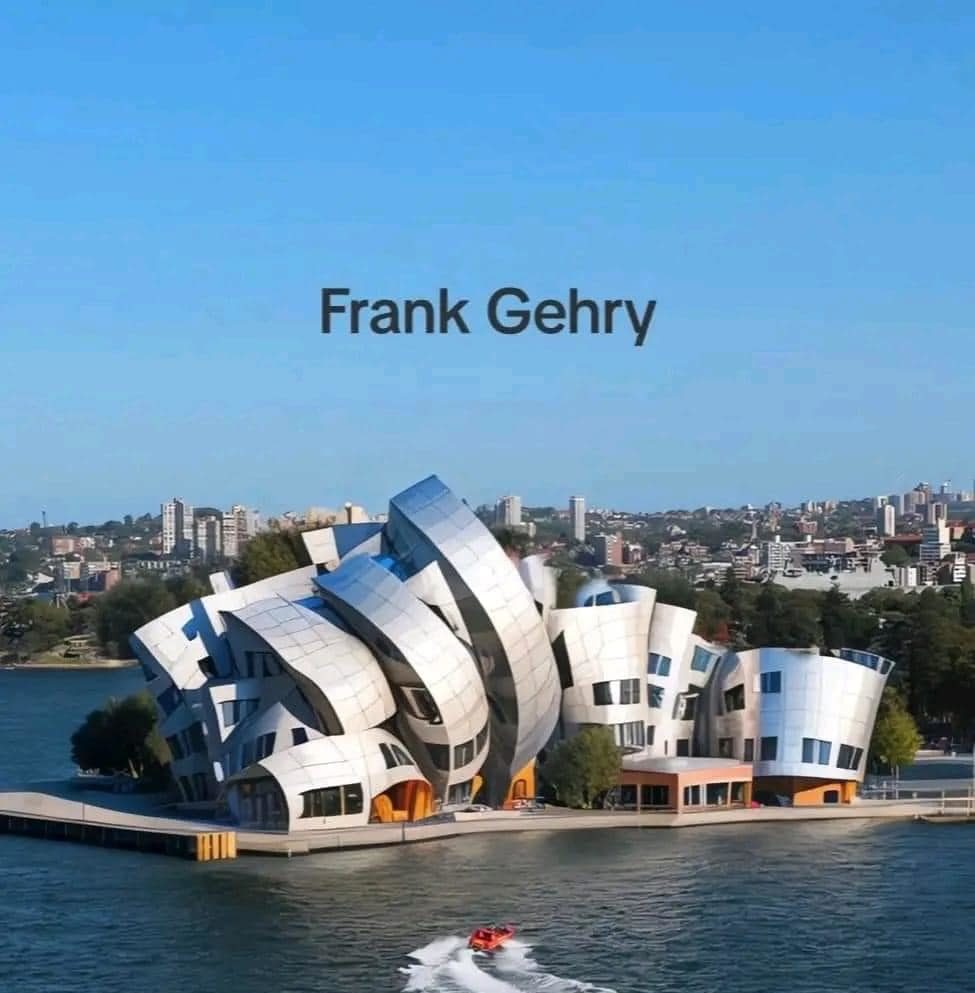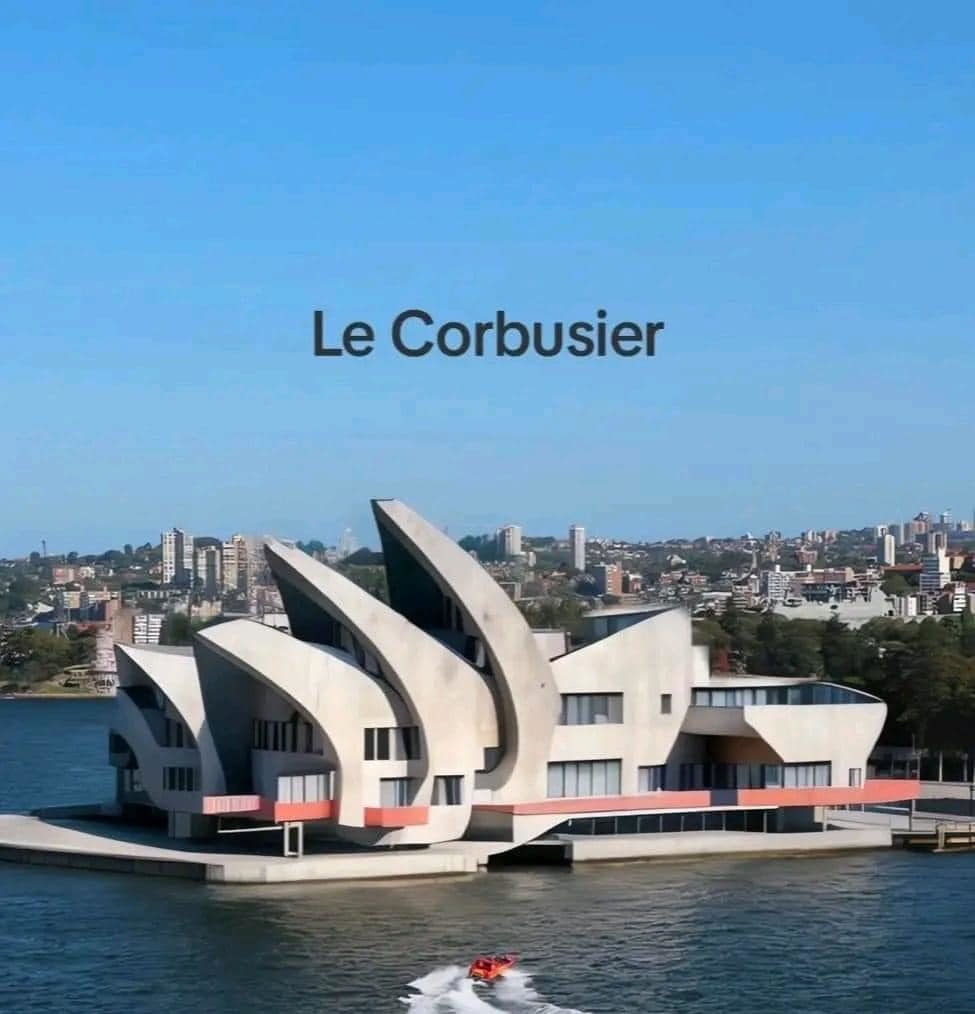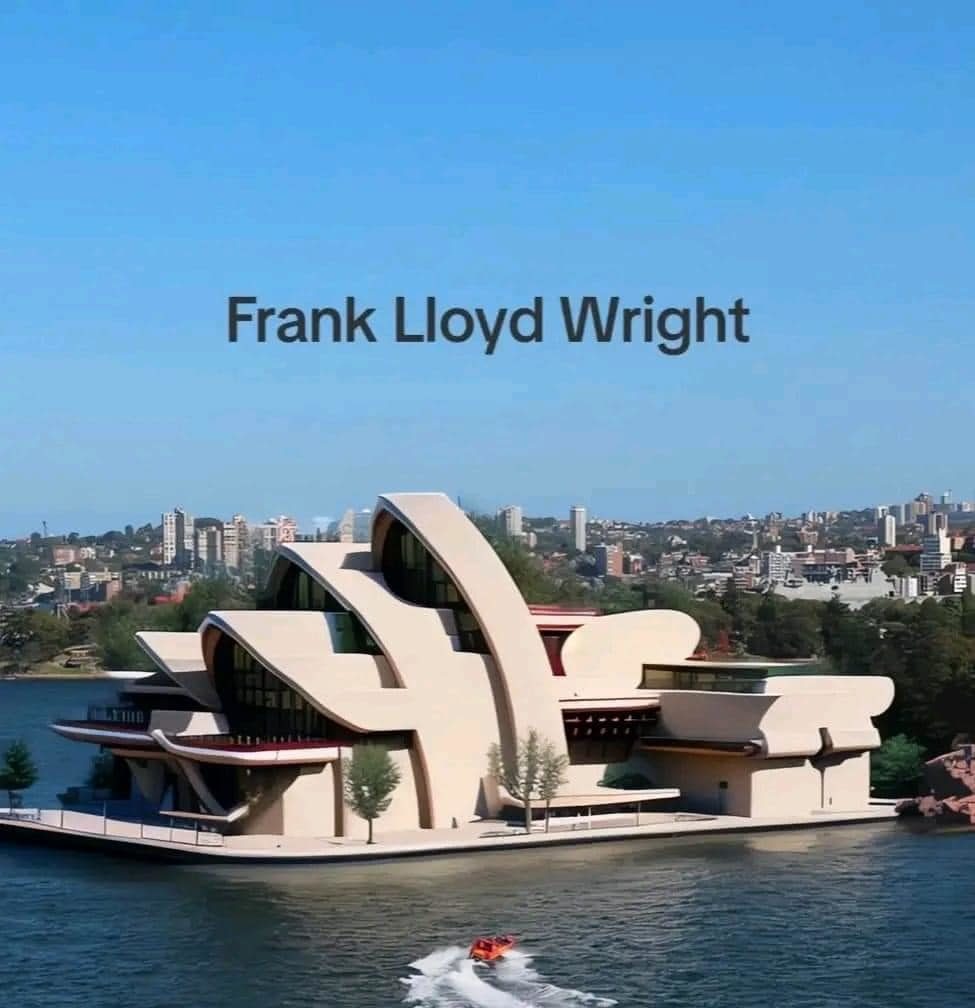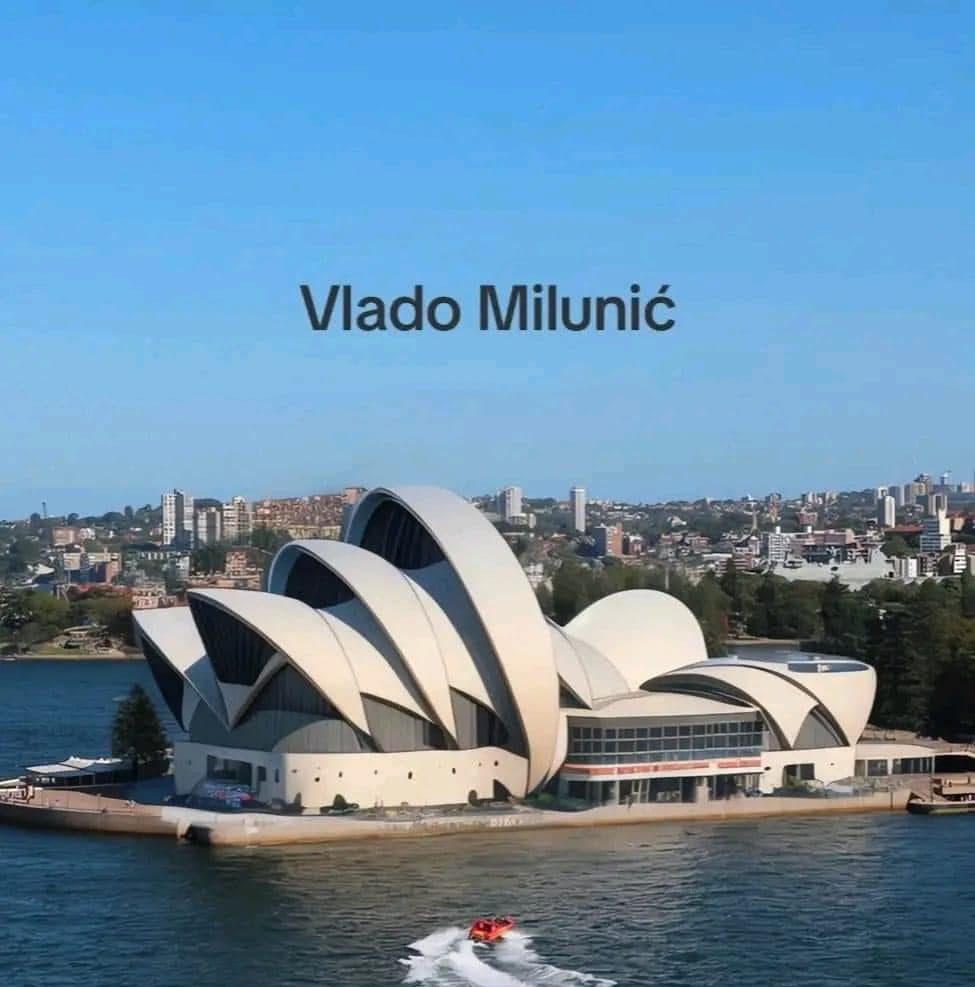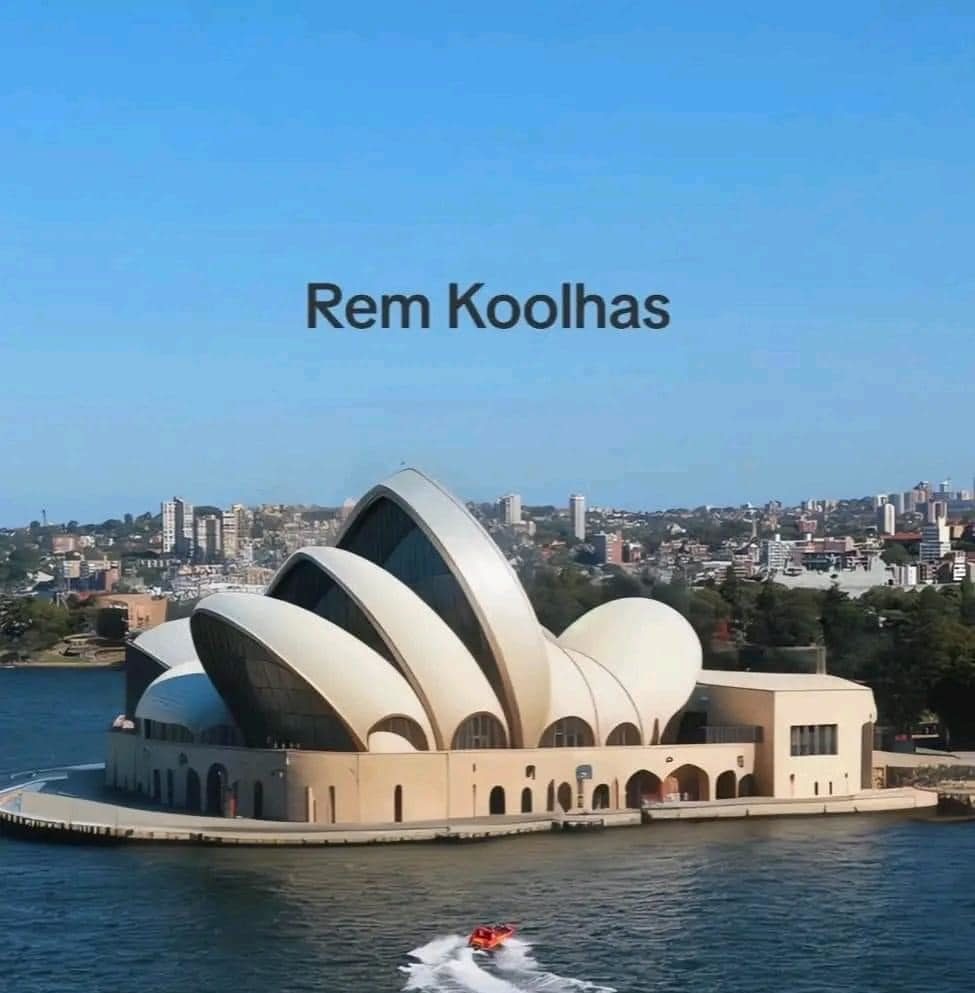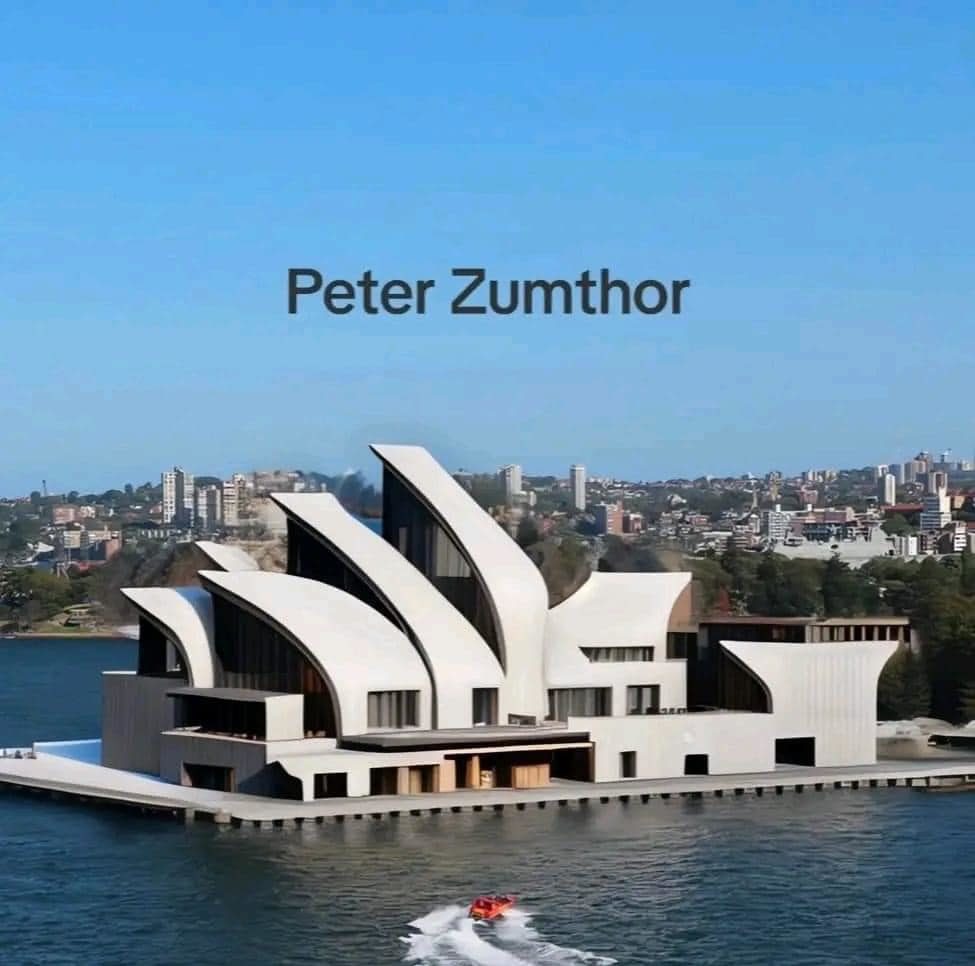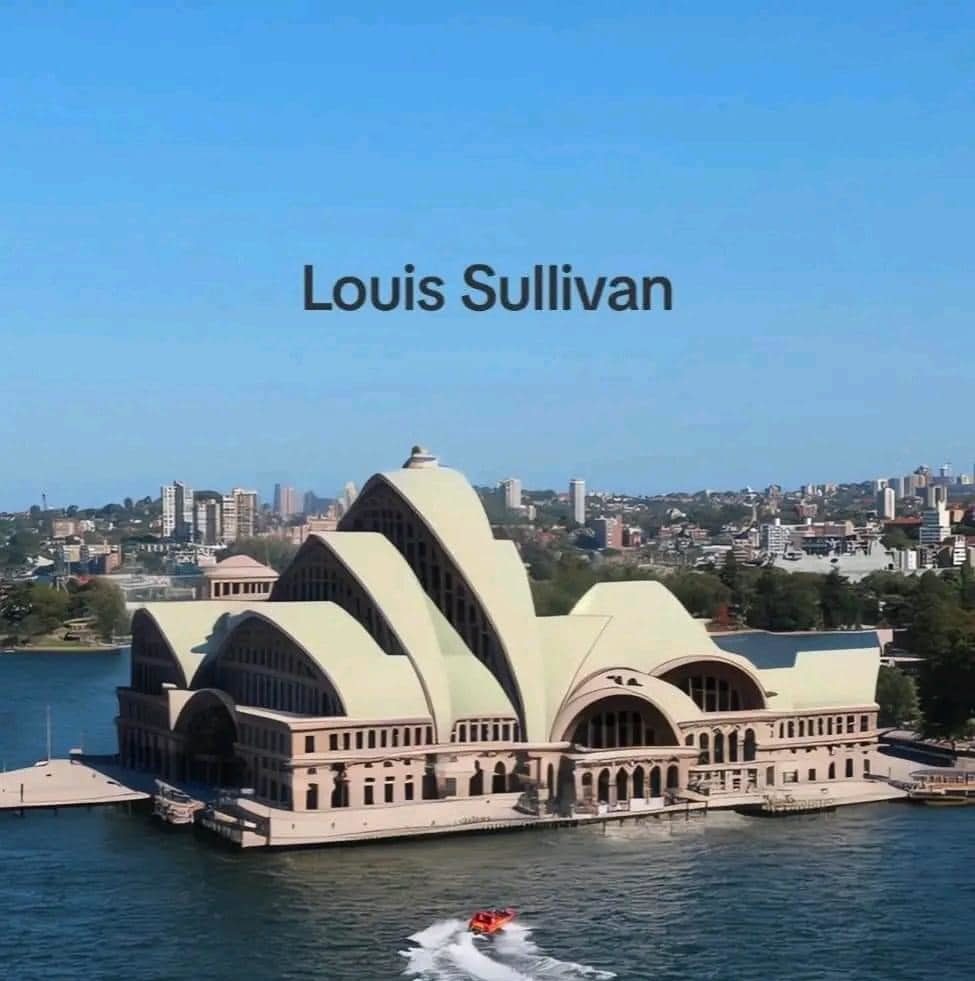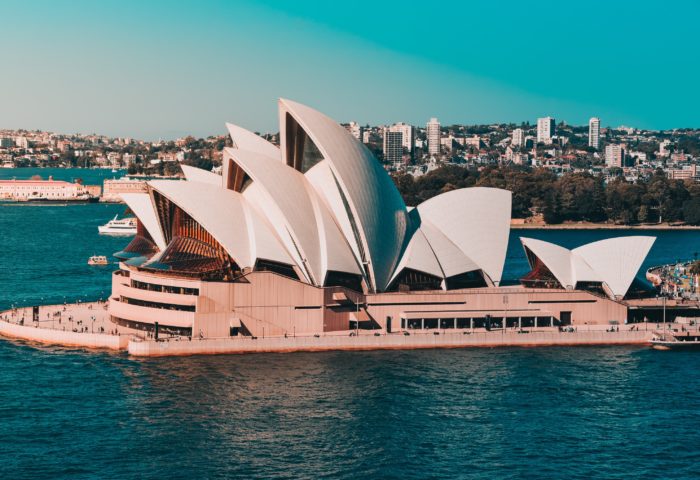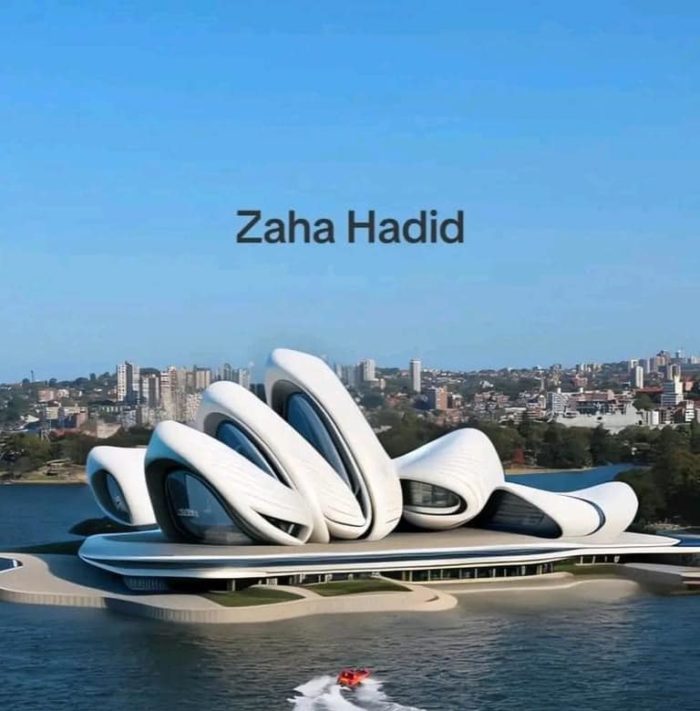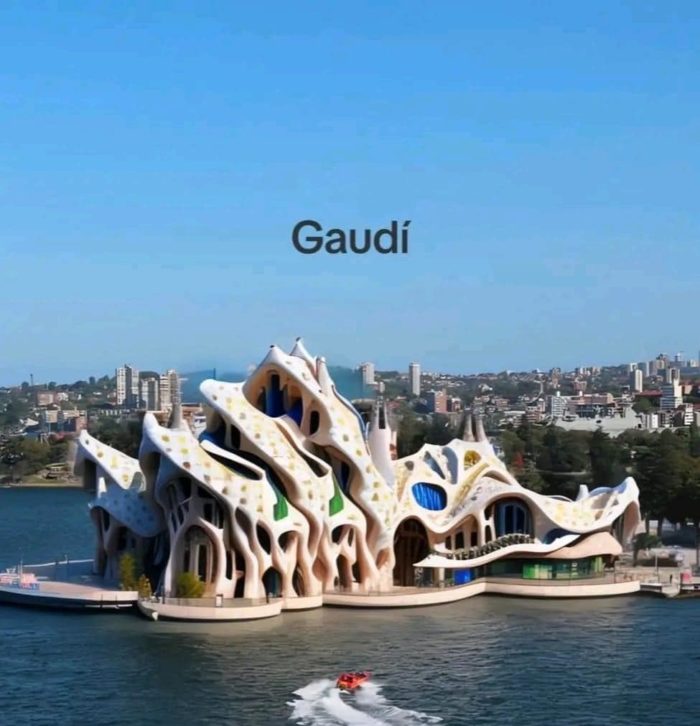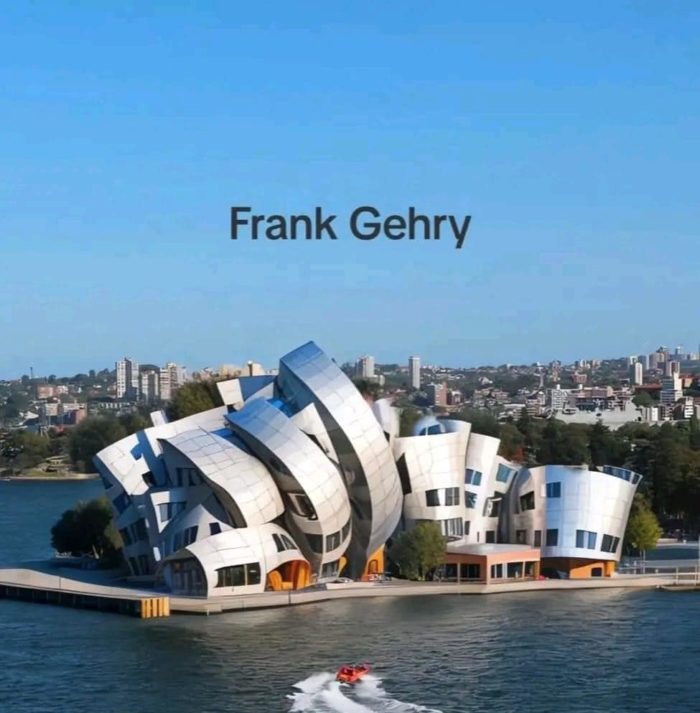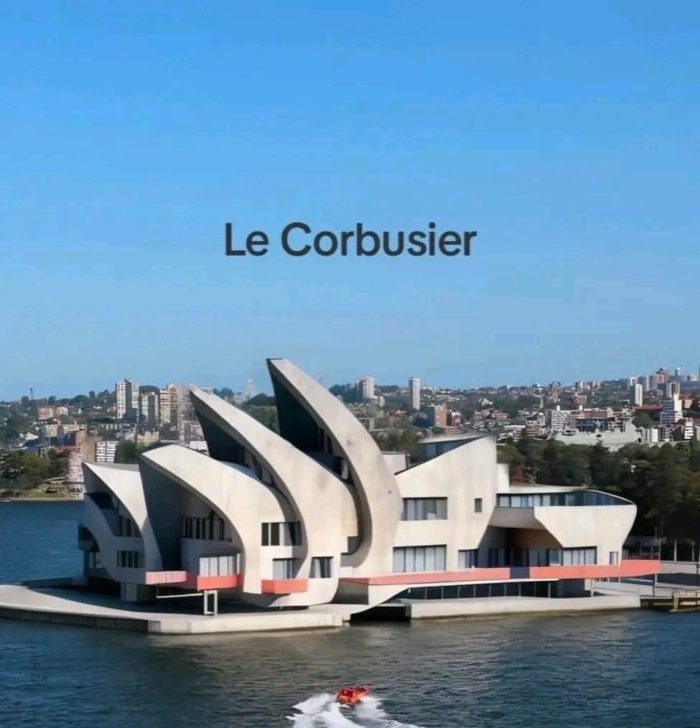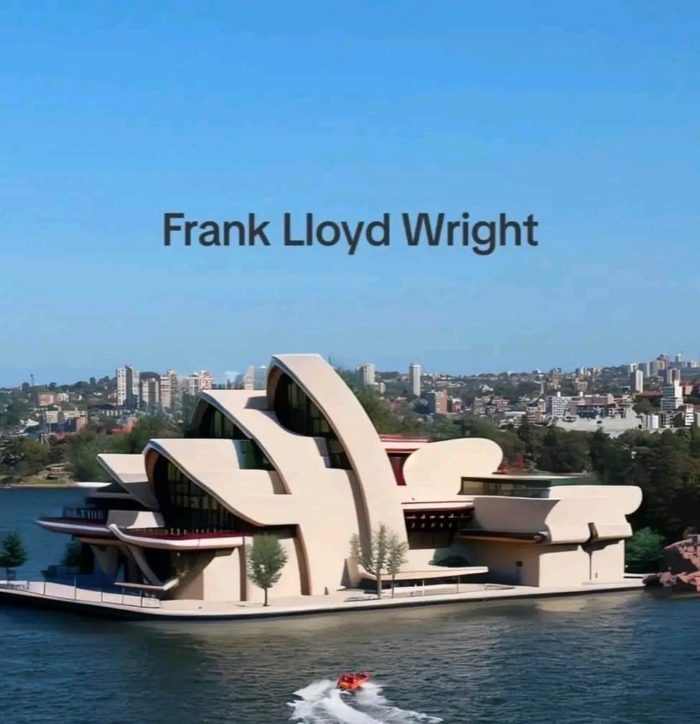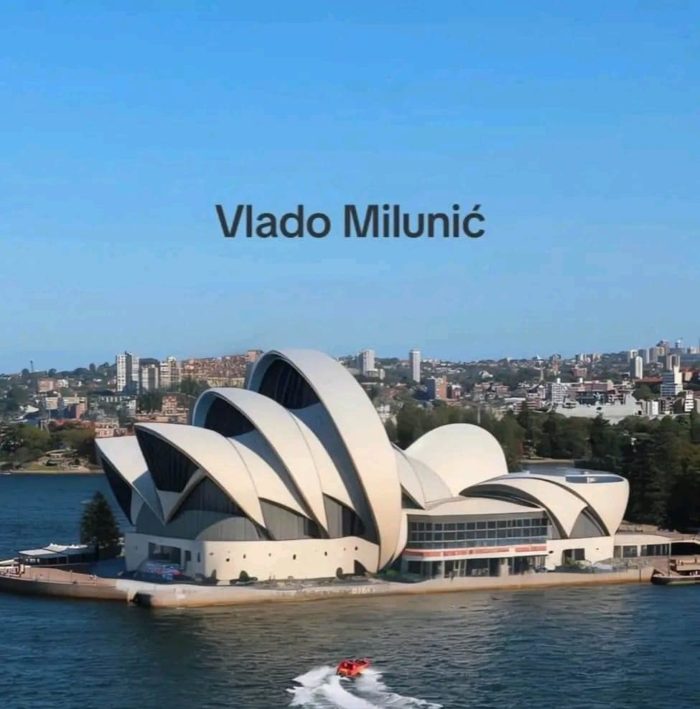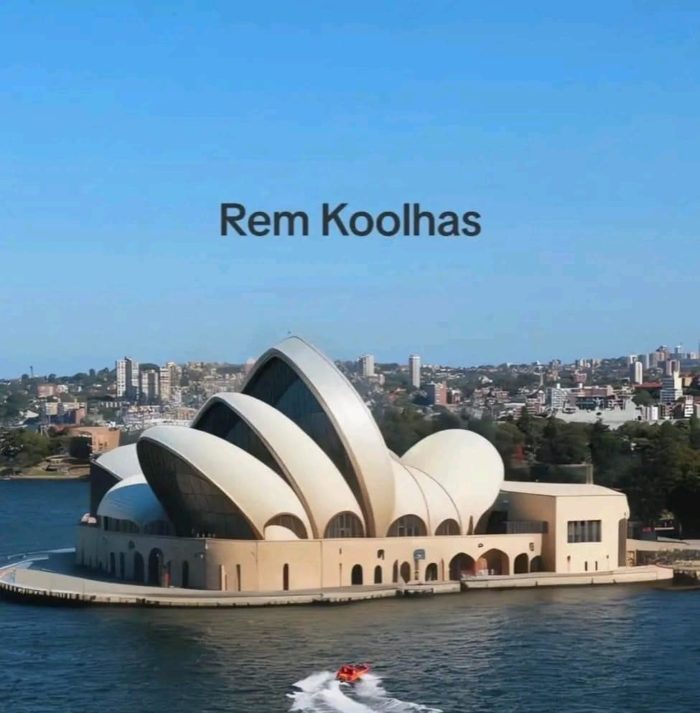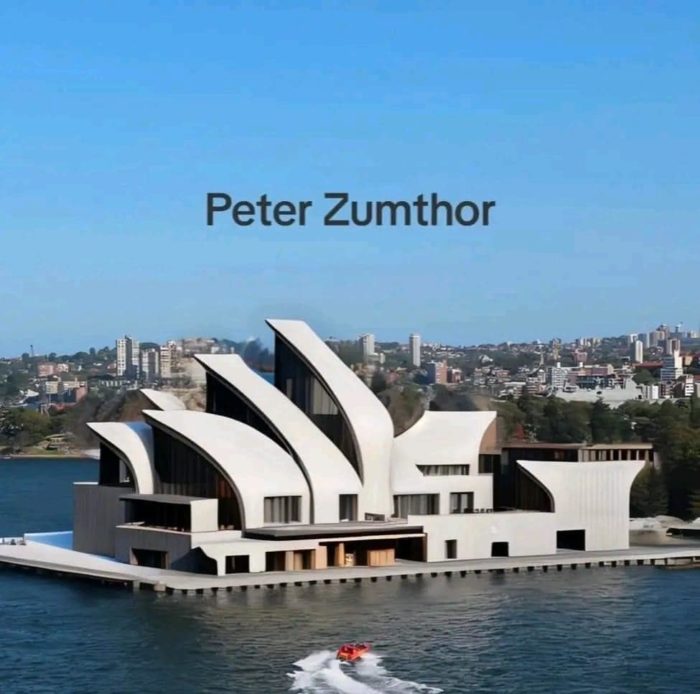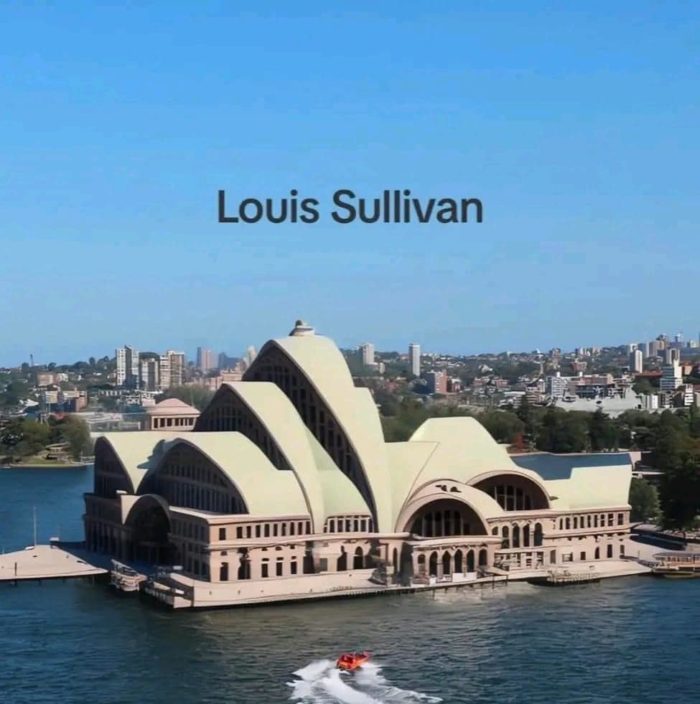The Sydney Opera House is undeniably one of the world’s most iconic architectural marvels, gracing the shores of Australia with its breathtaking design. Conceived by the visionary Danish architect Jørn Utzon, the Sydney Opera House’s distinctive sail-like roof has captured the imaginations of millions since its completion in 1973. However, what if we could turn back time and invite some of the most renowned architects in history to put their unique stamp on this iconic landmark?
Reenvisioning The Sydney Opera House
In this reimagined journey, we explore how the Sydney Opera House might have looked had architects like Zaha Hadid, Antoni Gaudi, Frank Gehry, Le Corbusier, Frank Lloyd Wright, Vlado Milunić, Rem Koolhaas, Peter Zumthor, and Louis Sullivan been at the helm.
1) Zaha Hadid’s Futuristic Interpretation
Zaha Hadid was celebrated for her avant-garde, futuristic designs characterized by fluid forms and organic shapes. If she had been tasked with reimagining the Sydney Opera House, we might expect to see:
– A radical transformation of the existing structure into a flowing, curvilinear masterpiece.
– The incorporation of cutting-edge materials and construction techniques pushing the boundaries of what is structurally possible.
– A reinterpretation of the iconic sails into a series of sweeping, interconnected curves that defy gravity.
– The use of bold, vibrant colors and innovative lighting to create a dramatic visual impact, especially at night.
Zaha Hadid’s design would undoubtedly push the boundaries of architectural convention, transforming the Sydney Opera House into a true 21st-century marvel.
2) Antoni Gaudí Organic Wonderland
Antoni Gaudí was a Catalan architect known for his unique, organic architectural style. If he had been given the opportunity to reimagine the Sydney Opera House, we might anticipate:
– Incorporating natural forms and motifs, emphasizing curves, shells, and intricate details.
– The use of colorful mosaics and ceramic tiles to adorn the exterior reflecting Gaudi’s love for vibrant, eye-catching patterns.
– A blend of Gothic and Art Nouveau influences, resulting in a fantastical, otherworldly appearance.
– The integration of lush gardens and greenery throughout the design blurring the line between architecture and nature.
Gaudi’s interpretation of the Sydney Opera House would be a whimsical, surreal masterpiece reminiscent of his famous Sagrada Família in Barcelona.
3) Frank Gehry’s Deconstructivist Vision
Frank Gehry is renowned for his deconstructivist approach to architecture, characterized by fragmented forms and unconventional materials. If he had been tasked with reimagining the Sydney Opera House, we might see:
– A dramatic deconstruction of the existing structure, with its sails and shells broken into fragmented, irregular shapes.
– Using stainless steel, glass, and other unconventional materials to create a visually dynamic exterior.
– A design that challenges conventional notions of symmetry and order, evoking a sense of controlled chaos.
– Gehry’s signature play with light and shadow, creating a constantly changing visual experience.
Gehry’s Sydney Opera House would be a mesmerizing exploration of form and materiality, redefining the boundaries of architectural expression.
4) Le Corbusier’s Modernist Masterpiece
Le Corbusier pioneered modernist architecture, known for his minimalist, functional designs. If he had been entrusted with the Sydney Opera House, we might expect:
– A simplified, geometric reinterpretation of the existing structure, emphasizing clean lines and a sense of order.
– The use of concrete and steel as dominant materials reflecting his preference for industrial materials.
– A focus on functionality and efficiency, emphasizing the practicality of the space for performances and events.
– Integration of modular elements to allow for flexibility in the use of space.
Le Corbusier’s Sydney Opera House would be a testament to the principles of modernist architecture, emphasizing form following function and a commitment to simplicity.
5) Frank Lloyd Wright’s Organic Unity
Frank Lloyd Wright was a visionary architect known for his “organic architecture” concept, where the building is designed to harmonize with its natural surroundings. If he had been given the opportunity to reimagine the Sydney Opera House, we might expect:
– Integrating the building with the surrounding landscape, blurring the boundaries between the structure and the harbor.
– The use of indigenous materials, such as sandstone and timber, to create a sense of regional identity.
– A design that draws inspiration from the natural world, with flowing lines and organic shapes.
– An emphasis on horizontal lines and cantilevered forms, creating a sense of horizontality that complements the horizontal expanse of the water.
Frank Lloyd Wright’s Sydney Opera House would celebrate nature and architecture in perfect harmony, a testament to his belief in organic unity.
6) Vlado Milunić’s Avant-Garde Experiment
Vlado Milunić was a Czech architect known for his avant-garde designs. If he had been invited to reimagine the Sydney Opera House, we might see:
– A bold departure from the existing structure, with a complete redesign that challenges preconceived notions of form.
– Using experimental materials and technologies to create a visually striking, forward-thinking design.
– An emphasis on transparency and openness, blurring the lines between the interior and exterior spaces.
– A playful and whimsical approach to design, incorporating unexpected elements and surprises throughout.
Milunić’s interpretation of the Sydney Opera House would be a daring and experimental departure from tradition, pushing the boundaries of architectural expression.
7) Rem Koolhaas’s Conceptual Exploration
Rem Koolhaas is known for his conceptual and intellectual approach to architecture. If he had been given the task of reimagining the Sydney Opera House, we might expect:
– Exploring the underlying concepts and ideas behind the Sydney Opera House, leading to a radical reinterpretation.
– A focus on the socio-cultural aspects of the building, reimagining it as a dynamic hub for creativity and innovation.
– An emphasis on adaptability and flexibility, allowing the space to evolve and respond to changing needs.
– The incorporation of cutting-edge technology and digital elements to create an immersive and interactive experience.
Koolhaas’s Sydney Opera House would be a thought-provoking and conceptually rich exploration of the role of architecture in contemporary society.
8) Peter Zumthor’s Sensory Experience
Peter Zumthor is well-known for his emphasis on sensory experience in architecture. If he had been invited to reimagine the Sydney Opera House, we might anticipate:
– A design that engages all the senses, from the texture of materials to the play of light and shadow.
– Using natural materials like stone and timber to create a tactile and sensory-rich environment.
– A focus on creating intimate and contemplative spaces within the grandeur of the opera house.
– An emphasis on the experiential qualities of sound, acoustics, and the relationship between music and architecture.
Zumthor’s Sydney Opera House would be a testament to the power of architecture to evoke deep emotional and sensory responses.
9) Louis Sullivan’s Ornamental Elegance
Louis Sullivan was an architect known for his ornamental and decorative designs. If he had been given the opportunity to reimagine the Sydney Opera House, we might expect:
– Elaborate decorative motifs and intricate ornamentation adorning the exterior and interior of the building.
– A celebration of craftsmanship and craftsmanship, focusing on the artistry of construction.
– An exploration of historical architectural styles and references, blending elements of the past with modern design.
– A commitment to creating a visually opulent and aesthetically rich experience.
Sullivan’s Sydney Opera House would be a dazzling display of architectural ornamentation, harkening back to a time when detail and decoration were paramount.
The Sydney Opera House is a timeless masterpiece that has captivated the world for decades. While Jørn Utzon’s design remains iconic, it is fascinating to imagine how some of history’s most renowned architects might have reimagined this iconic landmark. Each architect’s unique style and vision would have undoubtedly resulted in a Sydney Opera House that is a testament to their genius and a source of inspiration for future generations.
